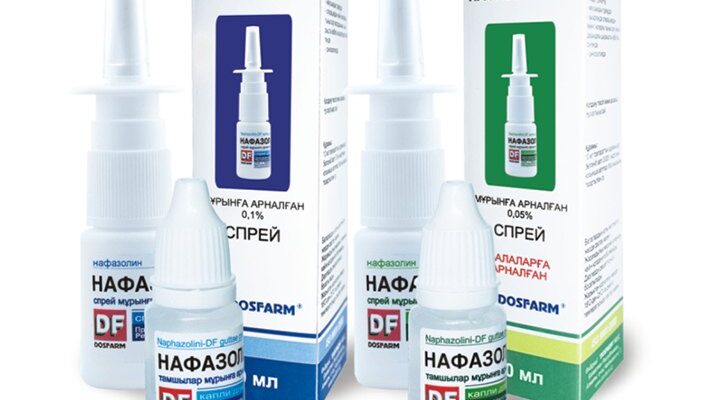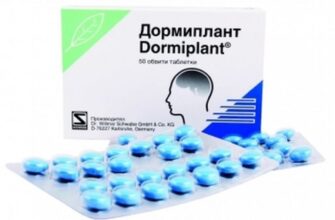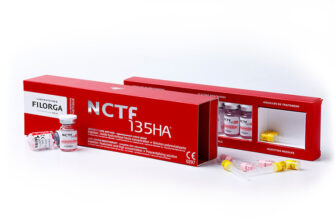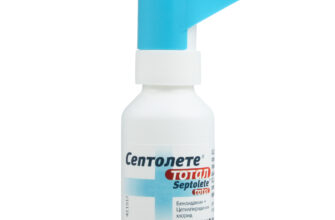Review of the best according to the editorial board. On the selection criteria. This material is subjective and does not constitute advertising and does not serve as a purchase guide. Before buying, you need to consult with a specialist.
Inside the bones of the human facial skull, there are several cavities called sinuses. They lighten bone mass, resonate, making sounds louder. They warm and humidify the air in them, and have thermal insulation properties. The largest are the paired maxillary sinuses, or maxillary sinuses, which were named after the English doctor and anatomist Nathaniel Haymore, who discovered them.
They are equipped with wide outlet openings that communicate with the nasal cavity. Almost a third of all diseases treated by ENT doctors are in one way or another associated with the pathology of the paranasal sinuses, and, above all, with maxillary sinuses. Acute, or chronic process of inflammation of the mucous and submucous tissue lining the inside of the maxillary sinus, and is called, respectively, acute or chronic sinusitis, or sinusitis.
The most common cause of sinusitis is inflammation of the nasal cavity – rhinitis, both acute and chronic, viral diseases – measles and flu, scarlet fever. Quite often, the odontogenic factor, or the presence of unsanded teeth of the upper jaw, acts as a cause of sinusitis.
Modern protocols for the treatment of acute and chronic sinusitis provide for the appointment of various pharmaceuticals to patients as conservative therapy, and for surgical interventions associated with decompression of the sinuses and their drainage, as well as the introduction of various drugs into their cavity. Consider the main medicines in different forms used for sinusitis, which can be purchased over-the-counter at retail, and rank them according to the popularity and effectiveness rating.
- Rating of the best remedies for sinusitis
- The best intranasal remedies for sinusitis (adrenomimetics – anti-congestants)
- Naphazoline (Naphtizin, Sanorin)
- Advantages and disadvantages
- Xylometazoline (Galazolin, Dlyanos, Xilen, Xymelin, Rinorus, Rinostop)
- Advantages and disadvantages
- Oxymetazoline (Nazivin, Nazivin-sensitive, Oxyfrin, Rinostop, Sialor)
- Advantages and disadvantages
- Vibrocil (Bebifrin)
- Advantages and disadvantages
- The best local anti-inflammatory therapy for sinusitis (intranasal corticosteroids)
- Fluticasone (Fliksonase, Avamis)
- Advantages and disadvantages
- Beclomethasone (Nasobek)
- Advantages and disadvantages
- Mometasone (Nasonex, Nosephrine)
- Advantages and disadvantages
- The best antibacterial agents for sinusitis
- Framycetin (Isofra)
- Advantages and disadvantages
- Polydexa
- Advantages and disadvantages
- Miramistin
- Advantages and disadvantages
- The best mucolytics for sinusitis
- Sinuforte
- Advantages and disadvantages
- Libexin Muko (carbocisteine)
- Advantages and disadvantages
- Ambroxol (Ambrobene, Ambrohexal, Ambrosal, Bronhovern, Lazolvan, Medox)
- What can not be done with sinusitis, or instead of a conclusion
Rating of the best remedies for sinusitis
| Nomination | a place | Active ingredient / Product name | price |
| The best intranasal remedies for sinusitis (adrenomimetics – anti-congestants) | 1 | Naphazoline (Naphtizin, Sanorin) | RUB 30 |
| 2 | Xylometazoline (Galazolin, Dlyanos, Xilen, Xymelin, Rinorus, Rinostop) | RUB 25 | |
| 3 | Oxymetazoline (Nazivin, Nazivin-sensitive, Oxyfrin, Rinostop, Sialor) | RUB 145 | |
| 4 | Vibrocil (Bebifrin) | 252 RUB | |
| The best local anti-inflammatory therapy for sinusitis (intranasal corticosteroids) | 1 | Fluticasone (Fliksonase, Avamis) | 469 r |
| 2 | Beclomethasone (Nasobek) | 168 RUB | |
| 3 | Mometasone (Nasonex, Nosephrine) | 469 r | |
| The best antibacterial agents for sinusitis | 1 | Framycetin (Isofra) | 301 RUB |
| 2 | Polydexa | 333 r | |
| 3 | Miramistin | 205 RUB | |
| The best mucolytics for sinusitis | 1 | Sinuforte | RUB 1,993 |
| 2 | Libexin Muko (carbocisteine) | 415 RUB | |
| 3 | Ambroxol (Ambrobene, Ambrohexal, Ambrosal, Bronhovern, Lazolvan, Medox) | 123 r | |
| What can not be done with sinusitis, or instead of a conclusion | |||
The best intranasal remedies for sinusitis (adrenomimetics – anti-congestants)
Various drops for vasoconstriction, which lead to a decrease in edema, in the initial stages of sinusitis, can improve the communication of the excretory duct of the sinus with the nasal cavity. But it is important for the patient to understand that this symptomatic remedy for improving drainage helps only at the very initial stages of acute sinusitis – sinusitis, or with an exacerbation of a chronic process.
The fact is that liquid drugs applied inside the nasal cavity to the mucous membrane work only 'on one side', and often do not get inside the sinus, since the internal opening of the duct leading into it can be covered from the inside by the edematous mucosa. Since the drug does not penetrate into the sinus, these drops should be used only in the joint treatment of sinusitis together with antibiotics, and one should not rely only on their effect.
Naphazoline (Naphtizin, Sanorin)
Rating: 4.9
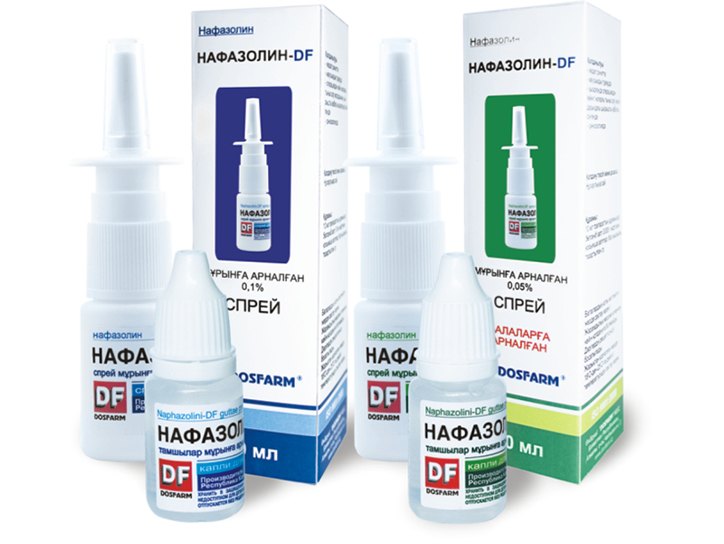
Naphthyzine, (chemically – naphazoline) is a vasoconstrictor drug that exhibits the effect of an alpha-adrenergic agonist in sinusitis. The mechanism of action of naphazoline is the activation of alpha-2 adrenergic receptors. As a result, a spasm of the vessels located in the submucous layer of the nasal cavity occurs, mucus secretion and redness decrease, and the exudative component decreases. As a result, breathing through the nose becomes easier.
Indications for the instillation of Naphthyzin are all acute processes in the nasopharynx, and chronic lesions, allergic and vasomotor components, accompanied by edema. Naphthyzin is instilled one drop into each nostril, but no more than 3 times a day. Naphthyzin is perhaps the cheapest treatment for sinusitis in the ranking. A bottle of 15 ml will cost only 9 rubles, and a spray of the same volume – from 23 rubles. Naftizin is produced by domestic pharmaceutical companies, for example, Slavyanskaya Apteka LLC, Lekko CJSC.
Advantages and disadvantages
Naphtizin entered the rating of the most popular remedies for sinusitis, due to its cheapness, wide distribution in pharmacies, and, alas, due to low medical literacy of the population. With prolonged use, Naphthyzine can be addictive, and with constant use of Naphthyzine, atrophy of the nasal mucosa occurs and so-called atrophic rhinitis develops. As a result, a constant dependence on Naphthyzin is formed, and the patient is forced to use it almost constantly, because without this medicine, the nose immediately clogs up. In addition, Naphthyzin has a short period of action and relieves the condition by only 3-4 hours or less. Naphthyzine is capable of causing systemic effects caused by a general adrenomimetic action. This is a rise in pressure, the development of a heartbeat – tachycardia. In the 21st century, there have long been more effective and not so 'rough' drops in the nose with sinusitis.
Xylometazoline (Galazolin, Dlyanos, Xilen, Xymelin, Rinorus, Rinostop)
Rating: 4.8
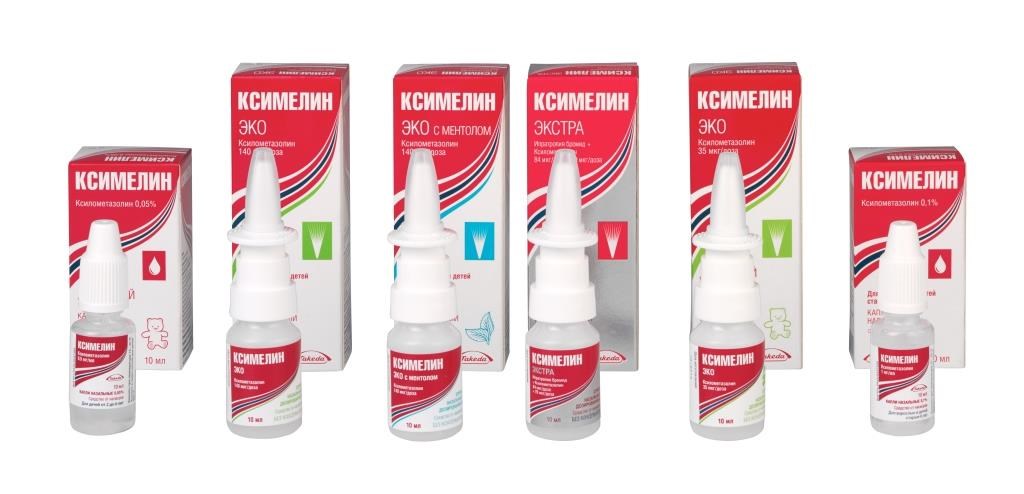
The next generation of anticongestants in drops for sinusitis presents a whole group of popular drugs that contain Xylometazoline. They are also produced as a spray, there is a dosage for children – at a concentration of 0.05%, and for adults – 0.1%.
Xylometazoline is also an adrenomimetic, but it does not irritate the nasal passages, does not contribute to the development of addiction and atrophic rhinitis, and has almost no systemic effect. The effect of using this substance is much longer – from 6 to 10 hours. It is shown to use Galazolin and other agents on average about 2 times a day, morning and evening, sometimes instillation is required in the middle of the day.
Xylometazoline is produced by many different companies, but one of the highest quality and most effective drugs is Otrivin, which is produced by Novartis, Switzerland. So, a 10 ml bottle intended for adults can be bought for 135 rubles. At the same time, domestic xylometazoline in the same dosage and the same volume, produced by OOO Grotex, can be purchased for only 19 rubles.
Advantages and disadvantages
First of all, xylometazoline is considered a safer drug, it does not have systemic effects like naphazoline, and its effect is longer. In addition, there is a special dosage for children. Still, an adrenergic agonist, even safer, can cause negative effects. Often, when the dosage is exceeded, cephalalgia and nasal burning develop, sometimes dryness in the nose appears. You also need to take into account possible diagnoses when the use of adrenergic agonists is generally contraindicated. These are glaucoma and thyroid pathology, hypertension and palpitations, pregnancy and age up to 2 years, even for children's dosage, as well as individual intolerance. In general, xylometazoline and its analogs are recognized as well-working, basic drugs for acute sinusitis.
Oxymetazoline (Nazivin, Nazivin-sensitive, Oxyfrin, Rinostop, Sialor)
Rating: 4.7
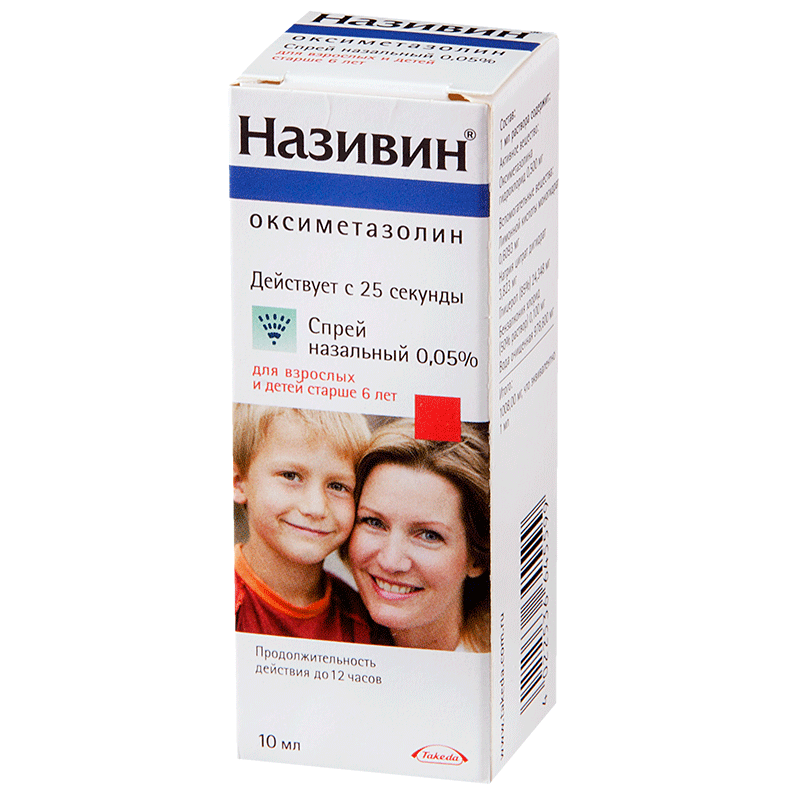
The latest drugs to reduce the swelling of the inner surface of the nasal cavity, Oxyphrin and others, contain oxymetazoline. This compound has a dual effect. Low concentrations stimulate alpha-2 adrenergic receptors, and with high drug levels, the effect extends to alpha-1 receptors. If used without an overdose, oxymetazoline does not cause local irritation, and with a long treatment period, it does not provoke reddening of the mucosa.
Nazivin is indicated, in addition to sinusitis, also for allergic diseases of the ENT organs, for otitis media, for diagnostic procedures in order to reduce the risk of bleeding.
Nazivin is used 1-2 drops in the right and left nasal passages 3 times a day (0.05%). In newborns, a drug with a concentration of 0.01% is used. Also Nazivin is available in the form of a spray, and is shown in short courses, no more than 5 days. Nazivin is produced by the company Merck, Germany. The minimum cost of 10 ml children's nasal drops will be 116 rubles. and above, and a nasal spray for adults at a concentration of 0.05% will have the same cost.
Advantages and disadvantages
The main advantages of Nazivin and its analogues are a more favorable safety spectrum, as well as a long-term and persistent effect. After one instillation, the effect of relieving nasal breathing and reducing mucosal edema can last up to 12 hours. However, in the event that the drug was used in significantly higher doses than recommended, then systemic effects may appear, such as nausea, narrow pupils, palpitations, increased body temperature. It is also not recommended to continue the course of treatment with drugs containing oxymetazoline for more than 7 days. Despite their much higher safety, addiction to them can develop, with a significant decrease in effectiveness.
Vibrocil (Bebifrin)
Rating: 4.6
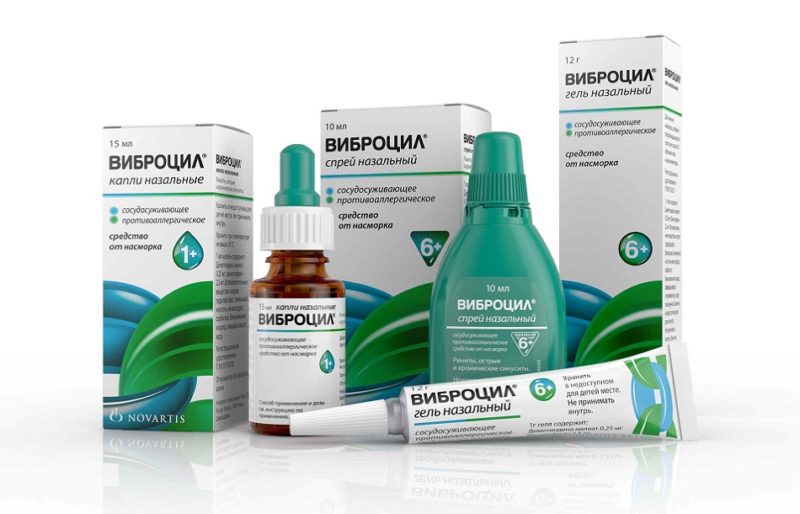
This drug is of mixed composition, and the effect of the use is not only alpha-adrenomimetic, which narrows arterioles, reduces swelling and redness in the nasal cavity. Vibrocil facilitates drainage from the maxillary sinus, and it also acts as a histamine receptor antagonist, which has an anti-allergic effect. Therefore, Vibrocil can be prescribed more widely, and in addition to sinusitis, it is prescribed to different patients with different manifestations of allergies in the ENT clinic – diseases.
It is necessary to drip Vibrocil 2-3 drops three times a day, both for children over 6 years old and for adults, into each nostril. For children under 1 year old, one drop is enough in the left and right nasal passages with the same frequency of administration. Vibrocil is also produced – a spray that emits a specially metered dose. Vibrocil is produced by the well-known pharmaceutical company Novartis (Switzerland), and a 15 ml dropper bottle can be purchased at a price of 240 rubles.
Advantages and disadvantages
Vibrocil combines the high vasoconstriction effect of phenylephrine with the allergic effect of dimethindene. All this together allows you to reduce the number of prescribed drugs, and instead of two drugs, use one, excluding polypharmacy. The cost of this drug, of course, is not small, but if we consider that Vibrocil is a two-in-one drug, then it is not too high.
The features of the application should also include the need for a short course, no longer than 7 days without a doctor's prescription. Longer use in the form of self-medication, as in the case of other drops for sinusitis, can cause a worsening of the condition due to the rebound effect, in which the medicine itself causes swelling of the nasal mucosa. Also, this drug has no pronounced symptoms of overdose and serious side effects. In some cases, with severe abuse of Vibrocil, patients had discomfort in the stomach and a slight heartbeat.
The best local anti-inflammatory therapy for sinusitis (intranasal corticosteroids)
It is known that corticosteroid hormones such as prednisolone, dexamethasone, and their active derivatives, which are used in clinical practice, have the strongest anti-inflammatory and anti-allergic effect. Of course, in acute and chronic sinusitis, hormones are not always shown and not to all patients, but only with a violent nature of inflammation, with excessive intense exudation, which is accompanied by the accumulation of a large amount of secretion in the cavity of the maxillary sinuses, and causes severe clinical symptoms. These patients have fever, bursting headaches, facial aches, and other symptoms. Then intranasal forms of glucocorticosteroids come to the rescue.
Fluticasone (Fliksonase, Avamis)
Rating: 4.9
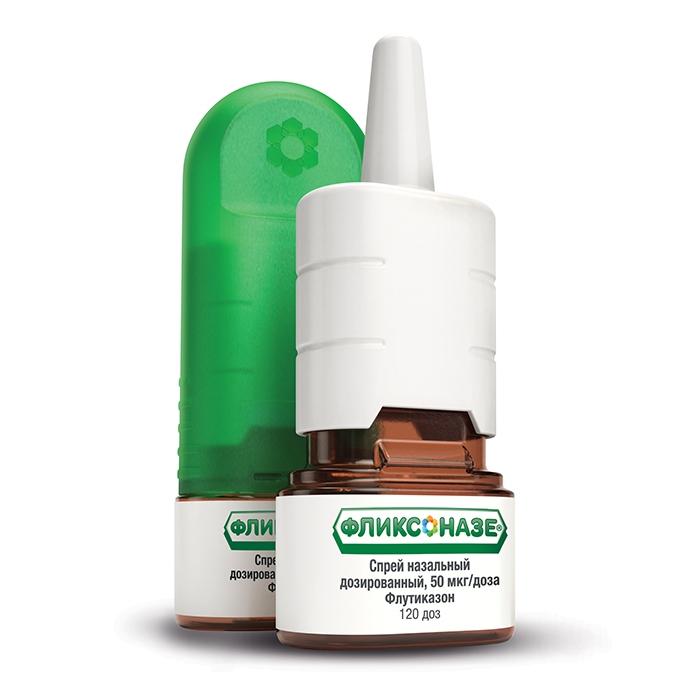
The hormonal preparation Fliksonase contains only fluticasone, that is, it is a mono-component, in its composition there is only a glucocorticosteroid. This drug interacts with special hormone receptors on the nasopharyngeal mucosa, and inhibits all cellular links of the immune system. Reduces the activity of macrophages and neutrophils, mast cells cease to secrete inflammatory mediators such as histamine, cytokines. This suppresses the allergic reaction and reduces the symptoms of hyperemia and edema of the mucous membrane of the upper respiratory tract.
Flixonazase effectively treats symptoms such as nasal congestion and sneezing, itchy nose and watery eyes, pressure on the eyes and a feeling of fullness in the upper jaw associated with sinus overflow
Fliksonase acts quickly, after an hour and a half, the patient feels relief from symptoms, the effect lasts a whole day after a single dose of fluticasone is injected into the nose. It is necessary to use Fliksonase for adults by injecting two doses into each nostril in the morning. As a result, the total daily dose will be 200 mcg. Once symptoms have been relieved, the dosage can be halved. The maximum dosage is 400 mcg per day, that is, no more than 4 instillations in each nostril during the day.
This drug is produced by the British company GlaxoSmith Kline, 1 bottle containing 60 doses of hormonal spray will cost 400 rubles, one spray dose contains 50 mg of the active ingredient.
Advantages and disadvantages
Fluticasone is one of the mildest and most effective hormonal drugs; it does not cause overdose symptoms if clinical guidelines are followed. However, there may be interactions with other drugs taken at the same time, especially with antifungal agents and medicines used to treat HIV infection. Therefore, at the first appointment of this medication in the event that the patient is taking such drugs, it is imperative to consult a doctor. This drug can be used without clinical supervision for no more than a week, but if it is prescribed for a longer period, then it is necessary to regularly check the function of the adrenal glands.
Beclomethasone (Nasobek)
Rating: 4.8

The active ingredient in this hormonal spray for the treatment of sinusitis is the potent corticosteroid beclomethasone. This medicine is a white, odorless suspension, has a pronounced decongestant, anti-allergic and anti-inflammatory effect in the nasal cavity and the mouth of the excretory ducts of the maxillary sinuses.
The mechanism of action of beclomethasone is standard for glucocorticosteroid hormones. In addition to acute and chronic sinusitis, the drug is indicated for the treatment of vasomotor allergic rhinitis, including with seasonal exacerbations due to hay fever. The drug is used intranasally, in adults – one dose of 50 mcg, but no more than 4 times a day in each nasal passage, with a subsequent dose reduction with the normalization of health. Nasobek is produced by the Czech pharmaceutical company Teva, and it is quite inexpensive: 200 doses in one spray bottle can be purchased for 151 rubles. Thus, at a maximum daily dose of 400 micrograms, this bottle will last 25 days, or a full month of continuous treatment.
Advantages and disadvantages
Unlike other hormonal drugs and vasoconstrictor drops, relief from taking Nasobek does not appear immediately, but accumulates and becomes noticeable after a few days, but after the end of taking the drug, it also acts for several more days. If you observe the dosage, then the side effect is practically not found, sometimes there is a slight irritation of the sensation of dryness in the nose. In the event that the drug is taken in a dosage four times higher than the maximum recommended, then only then systemic effects begin to appear, fraught with adrenal insufficiency. This drug can be used in pregnant women, if very necessary, although it is not recommended for standard reasons – to avoid any prescription for pregnant women, except for the vital ones.
Overall, Nasobek is a reliable drug that can reduce flare-ups in chronic sinusitis and improve quality of life in acute sinus infections.
Mometasone (Nasonex, Nosephrine)
Rating: 4.7
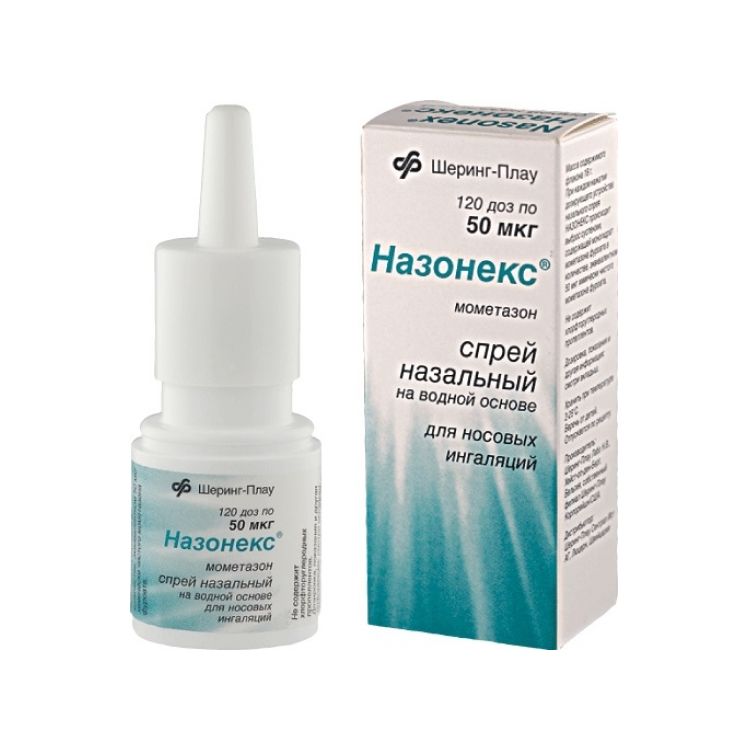
The third representative of intranasal glucocorticosteroid hormones for symptomatic and pathogenetic treatment of acute and chronic sinusitis is represented by Nasonex, with the active ingredient mometasone furoate. The mechanism of action of mometasone is standard for all corticosteroids. It reduces the release of histamine and metabolites of arachidonic acid, reduces the migration of neutrophils and macrophages to the inflammation focus, reduces allergic symptoms due to blockade of the release of histamine and other mediators.
Nasonex is indicated for the treatment of exacerbations of chronic sinusitis, while it should be used in combination therapy with antibacterial drugs. Also, Nasonex is well able to cope with the symptoms of allergic rhinitis, and especially the seasonal one caused by hay fever. Nasonex can also be used for prophylaxis, for example, when herbs begin to bloom. Nasonex is prescribed for adults according to the standard scheme: two doses in each nostril, containing 50 mcg, twice a day. As with other intranasal hormonal sprays, the daily dosage should not exceed 400 mcg. Nasonex is produced by the well-known pharmaceutical company Schering-Plow (Great Britain). A bottle containing 60 doses can be purchased in large Russian cities in retail at prices starting from 386 rubles.
Advantages and disadvantages
The advantages of Nasonex include extremely low absorption into the bloodstream, and the complete absence of systemic effects. Therefore, in the official instructions, there is not even a description of pharmacokinetics, that is, the path of the active substance in the blood. Even if a certain amount of this drug is swallowed inside, then an extremely small amount of mometasone will be absorbed into the blood from the gastrointestinal tract. That is why you should not be afraid to swallow excess medication that accidentally got into the throat after being injected into the nose. Despite its high safety, it is still not recommended to use it in pregnant and lactating women for general contraindications. Mometasone may have side effects, but only local. This is a burning sensation in the nose, a periodic sensation of irritation, and occasionally a mild form of nosebleeds may occur. They always stop on their own, and occurred in each of the 20 patients.
The best antibacterial agents for sinusitis
Perhaps the fastest way to recover and reduce all symptoms of acute sinusitis and exacerbation of the chronic process is the direct administration of antibiotic solutions into the maxillary sinus cavity during puncture and lavage. But the patient does not always manage to immediately get to the doctor, and it is not always possible to carry out this minimally invasive surgical intervention.
Clinical practice shows that almost all patients begin to take antibacterial drugs on their own, and just in order to avoid surgery. In this section, we will not consider modern and powerful antibiotics that are administered intramuscularly or intravenously, that is, parenterally. Consider their main representatives, which are used to treat ENT diseases. Currently, there are a number of highly effective antibacterial agents that are applied topically and applied to the nasal mucosa.
Framycetin (Isofra)
Rating: 4.9

Isofra is the commercial name for a highly effective antibiotic aminoglycoside (framycetin). Framycetin acts as a highly soluble sulfate and is commercially available as an intranasal spray. In addition to the bactericidal effect, the drug also has a bacteriostatic effect, that is, it not only prevents the multiplication of various pathogenic microorganisms, but also contributes to their destruction. With the accumulation of a sufficient concentration of the drug on the surface of the nasopharynx, bacteriostatic activity first appears, and then the destruction of pathogens. It affects the most common causative agents of ENT – infections and upper respiratory tract.
Isofra is used by injecting one dose per day into the right and left nasal passages, 4-6 times per day, the number of injections for children is reduced to 3. The maximum period of using Isofra without consulting a specialist is no more than a week. This drug is produced by the Bouchard Ricordati Laboratory, France, and the cost of one spray bottle (15 ml) is 255 rubles.
Advantages and disadvantages
The advantages of Isofra include a wide range of antibacterial activity, relatively infrequent use within the day, and the rare development of side effects in the form of mild skin allergic reactions. The only unpleasant fact that accompanies the long-term use of the drug is the destruction of the natural biocenosis and the appearance of dysbiosis of the upper respiratory tract. Also, long-term use can contribute to the emergence of drug resistance in microorganisms, so the ideal duration of treatment is 5 to 7 days.
Polydexa
Rating: 4.8

Polydexa is a highly effective antibacterial drug for alternative treatment regimens if, for example, according to the results of bacteriological cultures of discharge from the maxillary sinuses and washings from the walls of the nasal cavity, strains resistant to framycetin have been identified in the patient. In this case, the drug Polydex is shown, which contains two whole antibiotics – polymyxin B and neomycin. This combination allows you to significantly expand the spectrum of antibacterial action against microorganisms that cause inflammation of the maxillary sinuses, as well as the structures of the outer and middle ear. Also in the composition of Polydexa contains dexamethasone, which suppresses concomitant inflammation, and reduces the symptoms of pain and swelling.
To avoid confusion, it should be mentioned that there are two forms of the drug: a drug that is instilled into the ears for otitis media, and Polydex nasal drops with phenylephrine, which, in addition to the antibacterial and anti-inflammatory effect, cause symptomatic relief of breathing due to vasoconstriction and alpha-adrenomimetic action .
For adults, it is necessary to inject Polydex into the nose from 3 to 5 times, injecting it into each nasal passage. For children under 15 years of age, the number of injections daily should not exceed three doses. The average course of drug treatment lasts from 7 to 10 days. A 15 ml bottle of Polydex with phenylephrine can be purchased for 270 rubles, and the French company Bouchard Ricordati Laboratory also produces this drug.
Advantages and disadvantages
Polydexa is a multicomponent drug that acts immediately and powerfully on inflammation, on various strains of microorganisms that cause sinusitis, including those resistant to monocomponent antibacterial drugs, as well as a vasoconstrictor – phenylephrine. This allows the drug to quickly cope with uncomplicated sinusitis in the early days of the onset of unpleasant symptoms.
Contraindications include age up to 2.5 years, severe heart and kidney disease, hypertension. Also, the drug can cause allergic reactions, which will be expressed by a burning sensation and discomfort on the nasal mucosa. The drug should be used for several days, but no more than 10 days without consulting your doctor.
Miramistin
Rating: 4.7
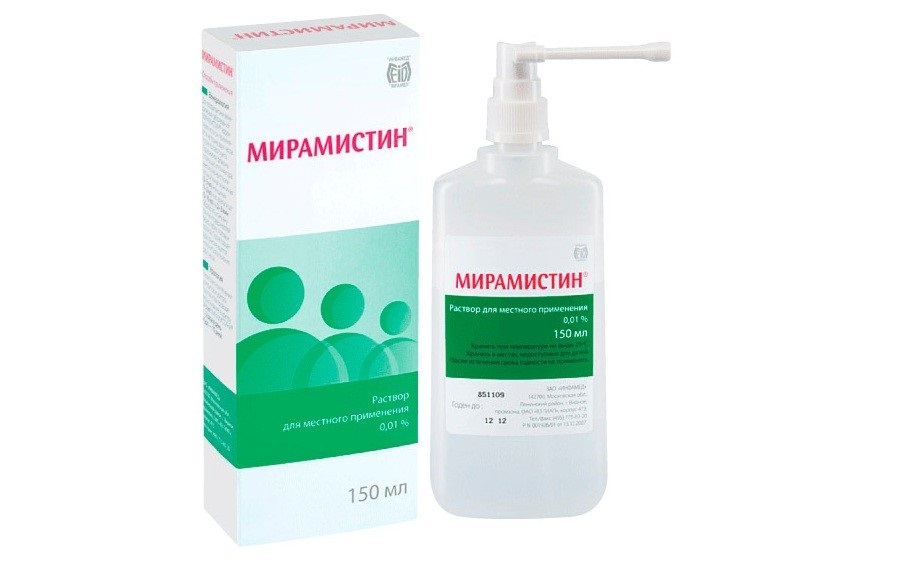
A certain pride is the fact that such a highly effective antiseptic preparation has been developed in the Russian Federation. We will not name the chemical name of the drug here, it is very complex. Suffice it to say that the active antiseptic substance belongs to ammonium compounds.
Miramistin is successfully used for all forms of inflammatory lesions of the nasopharynx and oropharynx, including chronic and acute sinusitis. In addition to irrigating the nasal passages, and holding the toilet of the nasopharynx and oral cavity as a disinfectant, Miramistin is also indicated as a first-line agent for draining and washing the maxillary sinuses. This medicine is highly effective against various types of pathogenic microorganisms, both gram-positive and gram-negative. Miramistin destroys protozoa, viruses and pathogens of fungal infections.
It is necessary to use Miramistin for irrigation of the nasal passages and for gargling with sinusitis three times a day. You can buy Miramistin in spray bottles, there are bottles from 50 to 500 ml in volume on sale. The average cost of a 150 ml spray bottle is 270 rubles. Miramistin is produced by the domestic scientific enterprise Infomed K.
Advantages and disadvantages
Miramistin does not irritate the mucous membranes of the mouth and nasal passages. It is a slightly foaming liquid that is tasteless and odorless. Miramistin is not capable of causing allergies in most cases, with the exception of rare individual intolerance. Miramistin does not have a systemic effect, it is not absorbed through the skin and mucous membranes, and acts only where it was applied. There are practically no contraindications to the appointment of Miramistin, and it is used to treat acute and chronic sinusitis with practically no restrictions. In terms of the ratio of antimicrobial effect and safety profile, this agent is one of the most profitable for purchase and for treatment in this rating. At the same time, the cost of Miramistin is more than democratic.
The best mucolytics for sinusitis
Consider another very important group of drugs that must be taken into account, especially in chronic sinusitis, when the secret inside the maxillary sinus becomes thick, viscous, and ceases to stand out on its own into the nasal cavity. In order to improve the rheological properties of this secretion, to increase its fluidity, and to split too long mucin molecules of mucus into shorter fragments, mucolytic drugs are used. They are usually prescribed for various forms of bronchitis and pulmonary pathology, but they are also used for the treatment of sinusitis, when it is necessary to restore the drainage function and improve the excretion of mucus. Consider the most popular and effective drugs that are widely used in domestic and world practice.
Sinuforte
Rating: 4.9
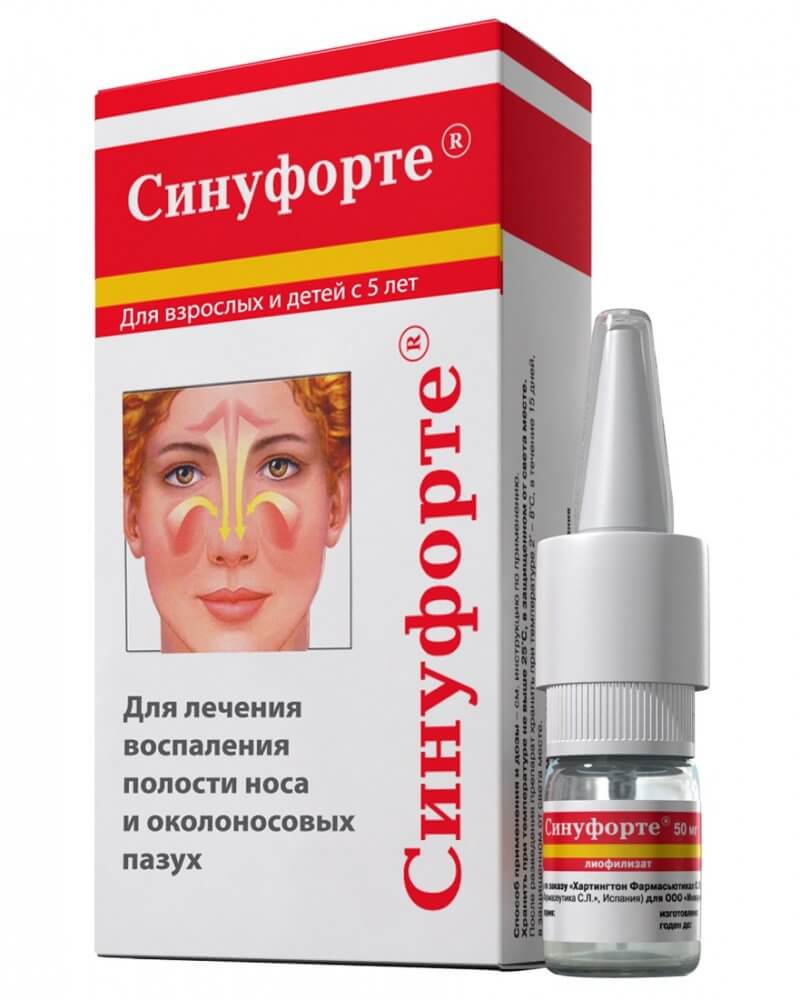
Perhaps, Sinuforte is the most amazing drug that is presented in the ranking of remedies for the treatment of sinusitis. Its high efficiency is based on the ability of the famous and beautiful cyclamen flower, or rather its tubers, to induce abundant secretion of mucus into the nasal cavity from all sinuses of the bones of the facial skull. This excess mucus is called hypersecretion, and the mucus is very thinned out. Its viscosity becomes very low, and mucus independently begins to move along the exit channel from the sinus cavity to the nasopharynx. At the same time, the drug has no selective effect only on the maxillary sinuses. From all the sinuses, an active outflow begins and the drainage function is normalized. Along the way, the drug enhances the capillary blood supply to the sinus mucosa, that is, microcirculation. The tool acts quickly, after a few minutes its effect begins to manifest itself, which lasts up to two hours. This drug is indicated for all types of sinusitis, both acute and chronic. In addition to sinusitis, it is used to treat ethmoiditis, frontal sinusitis and other similar diseases.
Sinuforte is used by introducing a dispenser into each nasal passage and spraying 2-3 drops of the agent. It is necessary to apply the medicine for sinusitis once a day, every day or every other day. With daily use, the average duration of treatment should not exceed 1 week, and if Sinuforte is injected every other day, the duration of the course can be doubled and amount to two weeks. Produced by Sinuforte of the Spanish pharmaceutical company Pharma Mediterranea, and by Invar. Sinuforte is a rather expensive drug. The bottle costs 1820 rubles. and higher. In this case, the dried, lyophilized concentrate is diluted with 5 ml of liquid. Each milliliter contains 10 drops, respectively, with the daily use of two drops, one package is enough for 25 days of treatment, or for two full courses.
Advantages and disadvantages
The great advantage of Sinuforte is its unique effect on the ability of the sinuses to synthesize a large amount of mucus, which is a cleansing procedure, and can, in uncomplicated cases, replace the puncture of the maxillary sinus. But the drug Sinuforte also has contraindications.
So, in the case of the presence of cysts or polyps in the maxillary sinuses, if there is a blockage or obstruction of the excretory ducts with tissue, the resulting excess secretion will not be able to find a way out. This is fraught with a serious deterioration in the condition: the appearance of persistent headaches, a feeling of fullness in the face, a rise in blood pressure, and other unpleasant symptoms.
In this case, an emergency aid will be an urgent bilateral puncture of the maxillary sinuses to remove secretions. Therefore, before using this expensive and highly effective agent on your own and for the first time, you need to be sure that the path for the formed secretion into the nasal cavity does not have any obstacles. And this can only be detected by an ENT doctor. Therefore, the conclusion is this: before spending almost 2000 rubles. on Sinuforte, a full consultation with a doctor is required.
Libexin Muko (carbocisteine)
Rating: 4.8
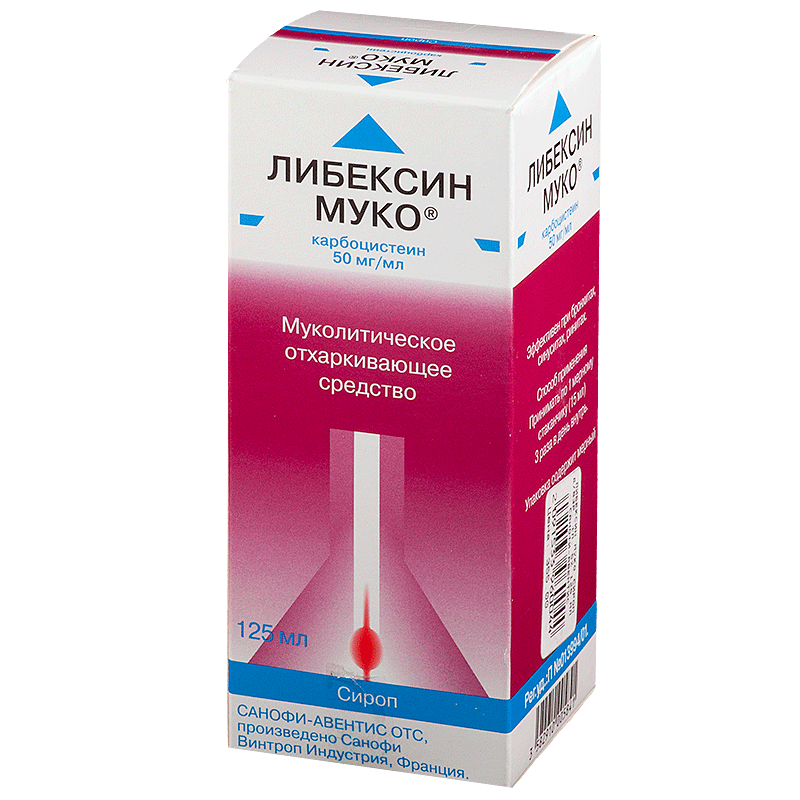
Carbocysteine is a modified molecule of acetylcysteine. Its task is to liquefy and break down the glycoproteins of mucus, which is located inside the maxillary sinuses. Of course, it is mainly used for bronchitis, but, when taken internally, carbocisteine is able to affect all the secreted mucus that is produced in the body. Carbocisteine activates the sial transferase enzyme. This normalizes the acid-base composition of mucus, which leads to its liquefaction. It is very important that carbocisteine contributes to the entry of secretory immunoglobulins A into the maxillary sinus cavity, which perform a protective function.
It is necessary to take this drug for persistent chronic sinusitis, when the drainage of mucus and discharge into the nasal cavity is impaired. Libexin Muko is available in a syrupy form, and an adult patient needs to take it three tablespoons three times a day. Libexin Muco is produced by the French pharmaceutical company Sanofi, and a 125 ml bottle costs from 400 rubles. and higher.
Advantages and disadvantages
The main advantage of carbocisteine is a high degree of dilution of the secretion, not only with sinusitis, but also with other sinusitis: ethmoiditis, frontitis, with lesions of the ethmoid labyrinth. This drug has contraindications for admission, for example, in patients with exacerbation of gastric ulcer and duodenal ulcer, in the presence of acute cystitis, and damage to the glomerular apparatus of the kidneys – with glomerulonephritis. It is not used in pregnant and lactating women, as well as in babies up to two years of age.
Ambroxol (Ambrobene, Ambrohexal, Ambrosal, Bronhovern, Lazolvan, Medox)
Rating: 4.

This drug is very popular in pulmonology and the treatment of ENT – diseases, as evidenced by a large variety of commercial analogues. Ambrobene is one of the highest quality and most effective preparations containing Ambroxol. It is produced by the German company Merkle. The chemical name is benzylamine. In the event that, with chronic sinusitis, there is a thickening of the secretion in the sinus, then after taking Ambrobene, after 30 minutes, the process of intensive liquefaction of this secret begins.
Ambrobene is indicated mainly for chronic sinusitis, since in the acute form of the disease, most often there is no obstacle to the dilution of the inflammatory secret, and it leaves on its own. But when the process is chronized, the secretion often thickens. Ambrobene is available in a variety of forms: in capsules, in syrup, in tablets, and even in solution for intravenous administration, for emergency situations in pulmonology.
Ambrobene for sinusitis is most often used in syrup, or in tablets. Dosage – depending on the severity of the condition and the goals of therapy.
You can buy a syrup in a 100 ml bottle for 100 rubles. Ambroxol does not exist in nature, it is synthesized artificially, and side effects sometimes develop to it, although rarely, but nevertheless. Most often it is dry mouth and nasal cavity, with an overdose, nausea and taste distortion are possible. It is not recommended to take preparations containing Ambroxol in the first trimester of pregnancy and in patients with severe renal and hepatic impairment. But, despite the side effects, a big plus remains the rapid liquefaction of the sinus secretion, which made it possible to include Ambroxol in the rating of agents for the treatment of sinusitis.
What can not be done with sinusitis, or instead of a conclusion
In this rating, the main groups of drugs that are used to treat various acute and chronic sinusitis were considered, and, first of all, sinusitis, which is the leading frequency among all sinusitis.
In conclusion, it must be said that it can harm the health of a patient with sinusitis, especially in the first days, when the visit to the ENT doctor has not yet been made, and various attempts are made to self-medicate. In acute sinusitis, thermal procedures and warming in the first days are categorically contraindicated. In the acute phase, swelling and pain occurs, and when you try to warm this place, the swelling and pain will only intensify, and if the outflow of secretion from the sinus is disturbed, then this will lead to the need for surgical intervention.
The second mistake can be called the initiation of treatment, in which strong antibiotics are immediately used in tablets, or, even worse, by intramuscular injections. Such self-prescription of potent drugs, and even with their introduction into the systemic circulation, can only cause intestinal dysbiosis, and is unlikely to help cope with sinusitis. In the best case, the symptoms will subside somewhat, the inflammation will become chronic, and the microorganisms that led to the occurrence of sinusitis will be able to acquire drug resistance to such a single administration of antibiotics. Therefore, first of all, you need to visit a doctor and follow only his prescriptions.
Attention! This rating is subjective and does not constitute an advertisement and does not serve as a purchase guide. Before buying, you need to consult with a specialist.

